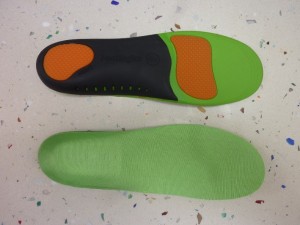Everyone knows what to do if your eyesight deteriorates: you go to see a qualified optometrist who can provide you with a prescription for the correct eyewear.
Of course, you could just buy cheap reading glasses, but would you really trust them not to damage your eyesight further? Even if they helped slightly, you know deep down they’ll be hurting you in the long-run.
At Newcastle Sports Injury Clinic, we frequently encounter a similar problem with off-the-shelf products. Not glasses, of course, but orthotics.
 Orthotics are the foam inserts that people add to their shoes, with the aim of correcting or improving posture, and reducing joint pain. By changing the way one’s foot strikes the floor, huge improvements can be made to existing and long-term injuries.
Orthotics are the foam inserts that people add to their shoes, with the aim of correcting or improving posture, and reducing joint pain. By changing the way one’s foot strikes the floor, huge improvements can be made to existing and long-term injuries.
We know that a good proportion of injuries are caused by issues relating to the alignment of the lower limb. These injuries can be everything from foot, ankle, knee, hip and back pain. Orthotics aim to improve movement mechanics through your lower limb. Using them could improve aspects like muscle tension, muscle overuse, joint alignment and efficiency of movement.
However, orthotics are as unique to an individual’s posture needs as glasses are for your eyes. Specific measurement and calculations ought to be carried out in order to ensure orthotics fit correctly and that they will provide the right corrections.
Our Podiatrist is able to identify whether a patient’s injury is caused by poor structural alignment or function by assessing a patient’s biomechanical structure, using a range of techniques, including gait analysis.
Furthermore, a lot of injuries start with posture or footstrike, so orthotics are frequently a good start as part of any training programme. Prevention is definitely better than cure, but in many cases, orthotics can also help to provide a cure.
When commencing a new training programme or new running project, a review with a podiatrist is a good starting point. As we all know, prevention is definitely better than cure, and an early biomechanical assessment will help to minimise risks. Ultimately some runners do leave it too late and pick up injuries related to their biomechanics—that is also when a review with a podiatrist can really help.
If orthotics are necessary, we will prescribe them as a possible short- or long-term measure. However, it’s an exact science – not something that can be replicated with cheap substitutes.
Fitting and wearing the wrong orthotics can cause more damage than good: quite literally adding insole to injury.
